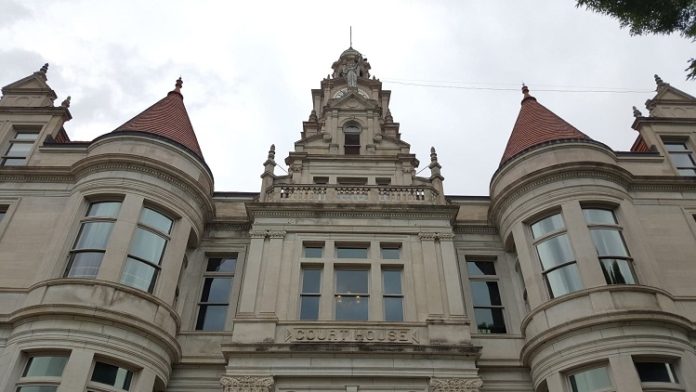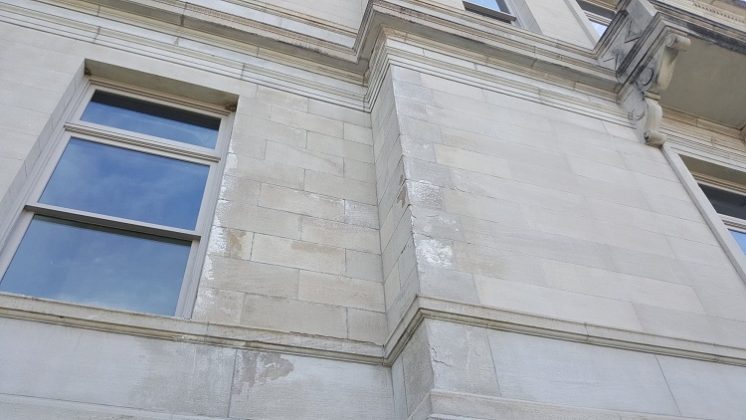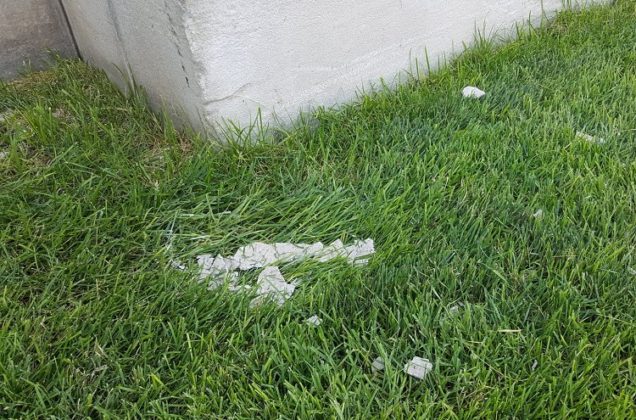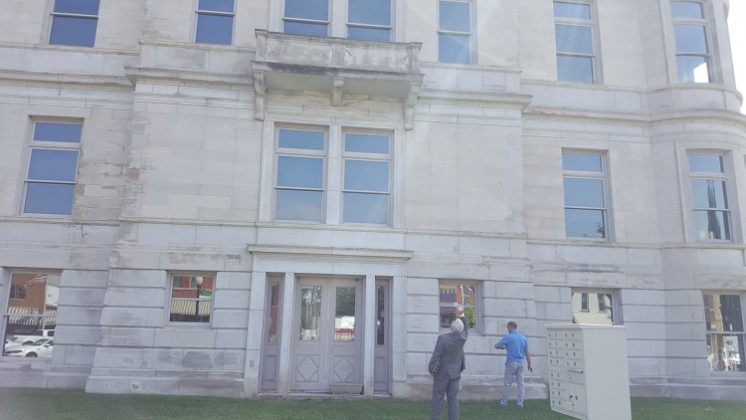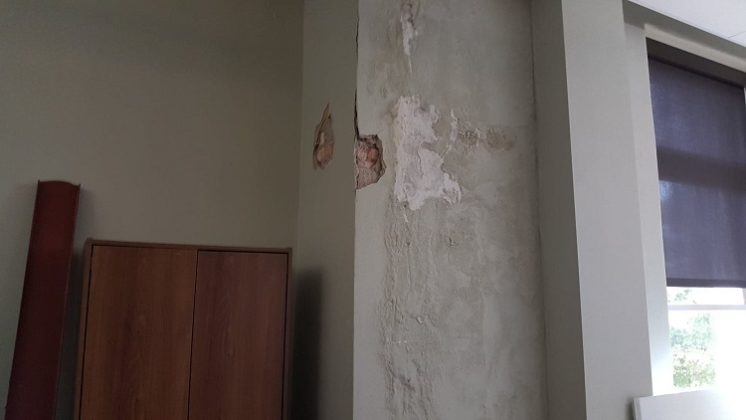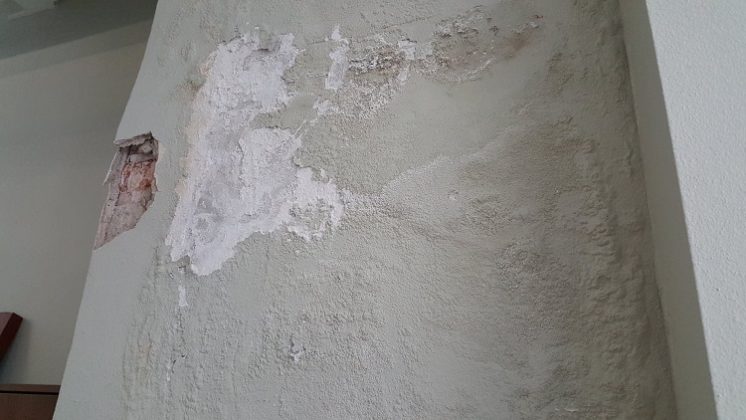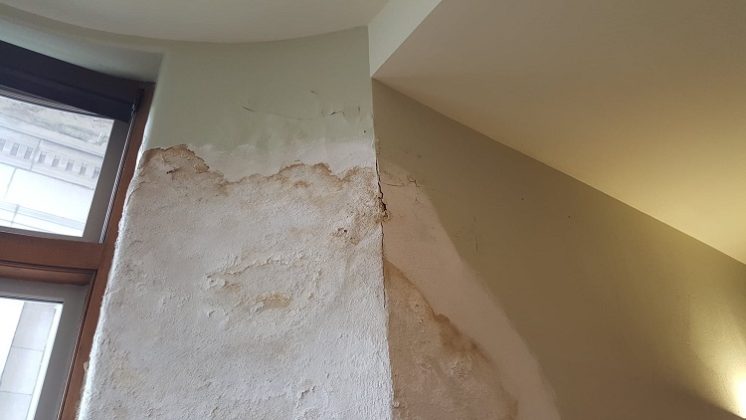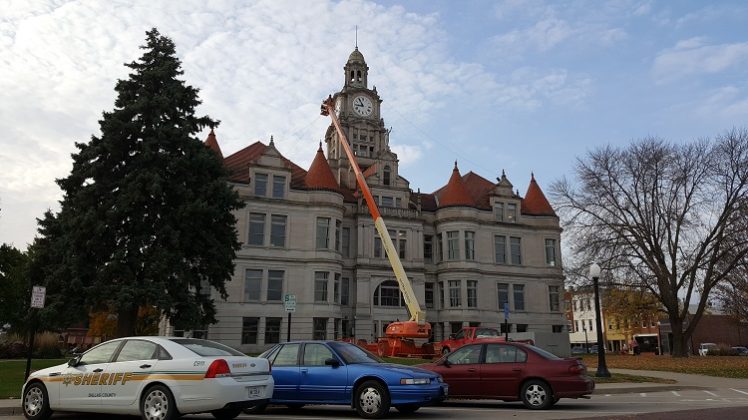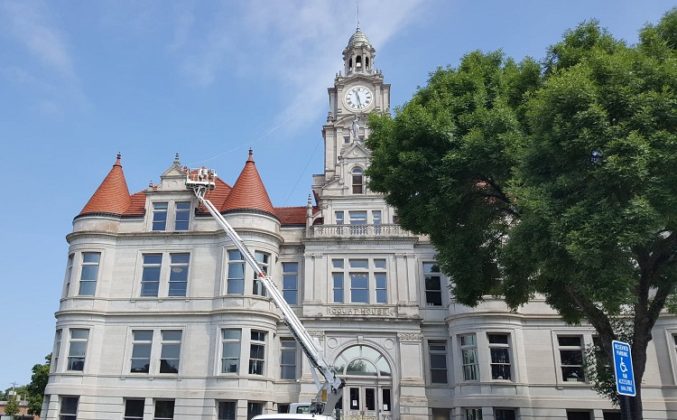Something is causing chronic water damage both to the inner rooms and outer surfaces of the Dallas County Courthouse, and the county supervisors recently hired a West Des Moines architectural firm to try to figure out how to stop the rot in the 118-year-old county landmark.
In order to get at the root of the problem, the supervisors hired Keffer/Overton (K/O) Architects, the same firm that worked on the $10 million remodeling and restoration of the courthouse in 2007. K/O Architects come to the job already familiar with the structure of the courthouse.
The supervisors contracted to pay K/O $23,448 to inspect and analyze the water-damage problem and produce a report with recommendations for correcting it. The firm recently completed its onsite inspection, using a combination of mechanical lift, thermal and drone imagery, testing and mock-ups. They are now analyzing their data and will produce a final report, including recommended solutions, in three to four months.
According to the K/O proposal, an additional $13,030 might be needed for specialized testing, such as masonry mortar hardness testing, stone moisture testing, thermal photography, roof drone imagery of the flashing and tile, masonry surface treatment testing, wood window testing and moisture spray testing for leaking and flooding.
In their initial proposal to the supervisors, K/O said they conducted a preliminary inspection of the interior, and it “became quickly obvious that the windows were only one of the many problems present.” They also noted “related plaster damage at the associated locations on the interior.”
The inspection of the exterior face revealed “visual evidence of current and previous moisture damage at several exterior stone surfaces representing all sides of the building. In many cases, the patterning of the exterior stone staining is suspect and appears that the moisture could be initiating from inside the wall system.”
How is the moisture getting inside the wall system? K/O said they believe “there is liquid and vapor moisture entering the wall system at a high elevation on the wall or roof of the building,” possibly through “broken or cracked masonry, poor-condition mortar, age of or deterioration of a spray-on moisture-applied barrier (a barrier was applied as part of the restoration 10 years ago due to the sand-blasted finish of the stone), broken roof tile, deteriorated/missing flashing, improper flashing soldering, leaking gutters or downspouts, etc.”
The proposal also observed that the courthouse has an internal system of gutters and downspouts, and “buildings with these systems are prone to all sorts of problems if these internal items fail and/or are not maintained correctly.” There is also concern “internal moisture has possibly contributed to a large amount of mold or fungus staining on the visible exterior surface of the stone building,” the proposal said.
A sign of the building’s minor dilapidation appeared sometime on or before Oct. 22, 2019, when a sword fell from the hand of the south-facing figure of Lady Justice. Luckily for the county’s liability insurance carrier, no one was hurt or killed by the falling mock weapon, which a Dallas County employee later located in the courthouse yard.
The courthouse has undergone significant reorganization since 2018, with the Dallas County Treasurer and Recorder offices now on the ground floor, the clerk of court and juvenile court services offices on the east wing of the second floor and the west wing currently being converted into a large courtroom, bringing the courthouse total to five courtrooms.
Fifth Judicial District Court Administrator Christopher Patterson estimated in 2017 that five courtrooms could accommodate the county’s projected growth into the 2030s.




